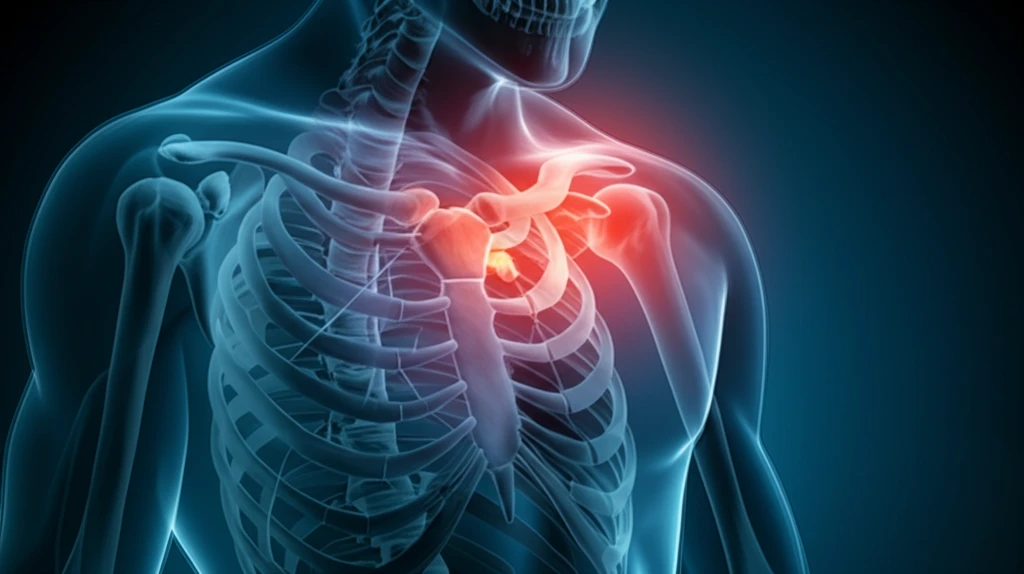
Decoding Shoulder Pain: Understanding Shoulder Dislocation and Acromioclavicular Joint Injury
"Navigating the complexities of shoulder injuries: A closer look at the rare combination of shoulder dislocation and acromioclavicular joint injury, its diagnosis, and treatment options."
Shoulder injuries can significantly impact your daily life, from limiting your ability to reach for a cup of coffee to hindering your performance in sports. While some shoulder problems are relatively common, others are exceedingly rare. This article delves into one such unusual occurrence: the simultaneous dislocation of the shoulder joint (glenohumeral joint) and injury to the acromioclavicular (AC) joint.
The shoulder is a complex structure composed of several joints, ligaments, and muscles working together to provide a wide range of motion. The glenohumeral joint, often simply called the shoulder joint, is a ball-and-socket joint where the head of the humerus (upper arm bone) fits into the glenoid fossa of the scapula (shoulder blade). The AC joint, on the other hand, is where the clavicle (collarbone) meets the acromion, a bony projection of the scapula.
Understanding the intricacies of these joints and the potential injuries that can occur is crucial for effective diagnosis and treatment. In the following sections, we'll explore the causes, symptoms, diagnostic methods, and treatment options for the rare combination of shoulder dislocation and AC joint injury, providing you with a comprehensive guide to navigate this complex condition.
Understanding the Rare Combination: Glenohumeral Dislocation and Acromioclavicular Disjunction

The simultaneous occurrence of glenohumeral dislocation and acromioclavicular disjunction is an exceptionally rare phenomenon. Medical literature documents only a handful of such cases, highlighting the unusual nature of this combined injury. These injuries typically result from high-impact trauma, such as a fall directly onto the shoulder. The force of the impact causes damage to the ligaments and supporting structures of both the glenohumeral and AC joints.
- High-impact trauma: Falls or direct blows to the shoulder.
- Glenohumeral joint dislocation: Displacement of the humerus from the glenoid fossa.
- AC joint injury: Sprains, subluxations, or dislocations of the acromioclavicular joint.
- Ligament damage: Tearing or stretching of ligaments in both joints.
Treatment and Rehabilitation: Steps to Recovery
The treatment approach for combined glenohumeral dislocation and AC joint injury depends on the severity of the injuries and the individual's specific needs. Initially, the glenohumeral dislocation must be reduced, which involves manually manipulating the humerus back into its normal position within the glenoid fossa. This is typically performed under anesthesia to minimize pain and muscle spasm. Once the shoulder is reduced, the focus shifts to stabilizing both the glenohumeral and AC joints. In some cases, non-operative management, such as immobilization in a sling, pain management, and physical therapy, may be sufficient. However, more severe AC joint dislocations or persistent glenohumeral instability may require surgical intervention to repair or reconstruct the damaged ligaments. Rehabilitation plays a vital role in restoring shoulder function after either non-operative or surgical treatment. Physical therapy programs focus on regaining range of motion, strengthening the surrounding muscles, and improving proprioception (the body's awareness of its position in space). With appropriate management and diligent rehabilitation, most individuals can achieve a satisfactory recovery and return to their desired activities.
